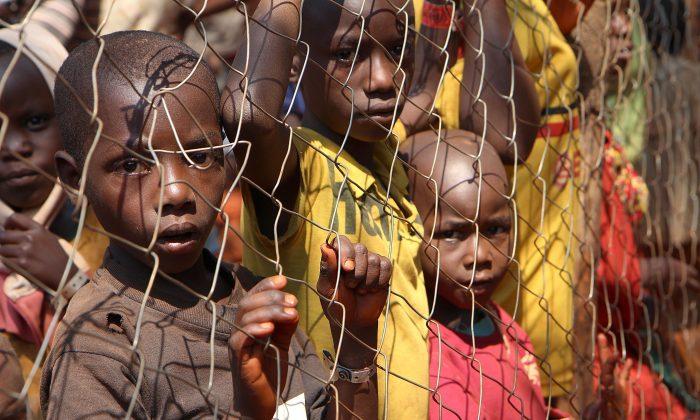The aphorism says “The poor are always with you.”
A comparable conclusion might be that refugees are always with us.
Indeed, approximately 3,500 years ago the Bible’s Old Testament account in Exodus of Hebrews leaving Egypt had numbers (according to some estimates) amounting to 1.5 million to 2 million—certainly a significant portion of the global population of the day. And they traveled in the wilderness for 40 years fed with “manna” from Heaven (perhaps the theological equivalent of United Nations Development Program assistance dispensed in the same area since the founding of the state of Israel in 1947).
Current projections of Palestinian refugees circa 2012, estimated the number of registered patrilineal descendants of the original “Palestine refugees,” based on the UNRWA registration requirements, is estimated to be 4.95 million of which an estimated 1.5 million live in UNRWA camps. Whether these are “refugees” in the same sense that desperate Africans attempting to cross the Mediterranean or leave killing grounds in slaughter houses such as Sudan, Mali, Nigeria, Libya, and so on, is a political judgment.
Thus the latest projection by the United Nations High Commissioner for Refugees that there are 60 million refugees deserves to be put into perspective. Although this figure is approximately the population of Italy (and would be the world’s 24th largest country if gathered in one spot), global concern has also been driven by intense media attention. Every time an overloaded boat collapses attempting a Mediterranean crossing and horror stories of individual tragedy occur, the media is there to suck the last drop of anguish from the survivors.
But as of 2013, the Population Division of the United Nations Department of Economic and Social Affairs estimated the world population at approximately 7.2 billion. That would mean that less than one-tenth of 1 percent of the world’s population are refugees.
Again, in perspective, after the American Revolution an estimated 65,000–70,000 “Loyalists” from a U.S. population of the day of approximately 2.5 million left the United States as refugees. They fled to a variety of countries, including Canada and amounted to about 3 percent of the U.S. white population.
Following World War I and World War II, ethnic cleansing drove millions from areas of strife, for example, Turkey and Greece; and throughout Eastern and Western Europe displaced persons or “DPs” were attempting to return to their original homes or escape the anticipated Soviet regimes and puppet state controls emerging behind the “Iron Curtain.” There are an estimated 1 million Cuban political refugees in the United States. And how does one categorize the upward of 12 million illegal aliens in the country (the UNHCR ignores them)?
Sometimes, there is simply no place to go: an estimated 2 million Chinese opposed to Mao, following their 1949 defeat in the Chinese Civil War, fled to Taiwan, but others (including my wife’s family) scattered around the globe. Still other simply stayed in the People’s Republic of China (PRC) and suffered persecution and often death in purges throughout the next 20 years.
It is not as if the U.S. government is ignoring the problem. The Bureau of Population, Refugees, and Migration (PRM) is a bureau within the U.S Department of State. According to descriptive material:
“It has primary responsibility for formulating policies on population, refugees, and migration, and for administering U.S. refugee assistance and admissions programs. The Bureau is headed by an Assistant Secretary of State. It provides aid for and seeks to enhance the protection of refugees, victims of conflict, and stateless people around the world, and manages the U.S. Refugee Admissions Program to resettle refugees in the United States. PRM is a major funder of the UN Refugee Agency, the International Committee of the Red Cross, the International Organization for Migration, and other aid groups. PRM also promotes U.S. population and migration policies in international fora and with other governments.”
But these efforts and those of the well-meaning, dedicated humanitarian workers throughout the world are palliative rather than curative. They are designed to provide short-term assistance until, they hope, the impetus for an individual burst of refugees evaporates, and the refugees can return to traditional homes. All too often, however, they have no expectation of near-term return (or long-term return for that matter).
Moreover, there is distinct reluctance to impose kinetic solutions even when outside military intervention could remove the impetus for refugee bursts. One thinks several light infantry battalions could tamp down most of the African refugee activity—perhaps not permanently but sufficiently to restore the original level of disorder.
There is a way but no will.

David T. Jones is a retired U.S. State Department senior foreign service career officer who has published several hundred books, articles, columns, and reviews on U.S.–Canadian bilateral issues and general foreign policy. During a career that spanned over 30 years, he concentrated on politico-military issues, serving as adviser for two Army chiefs of staff. Among his books is “Alternative North Americas: What Canada and the United States Can Learn from Each Other.”






Friends Read Free